Using our site means you agree to the use of cookies and similar technologies.
If you would like to disable cookies, read our cookie policy.
Using our site means you agree to the use of cookies and similar technologies.
If you would like to disable cookies, read our cookie policy.
Drummohr coastal camping and glamping site is a great place to stay for guests who want to explore Edinburgh wildlife. The Firth of Forth is one of the best places to see passing dolphins in Scotland, grey seals in Scotland and an abundance of seabirds nest on the rocks and islands in the Firth of Forth. Our own dog walk is a great place to bird watch and we have tawny owls nesting in the trees around the campsite. You will certainly hear them when staying at Drummohr, a great coastal campsite near Edinburgh.
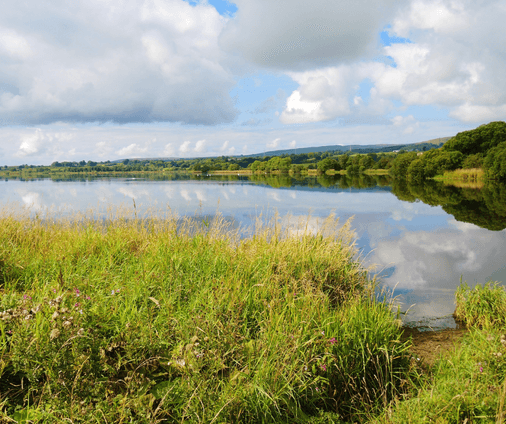
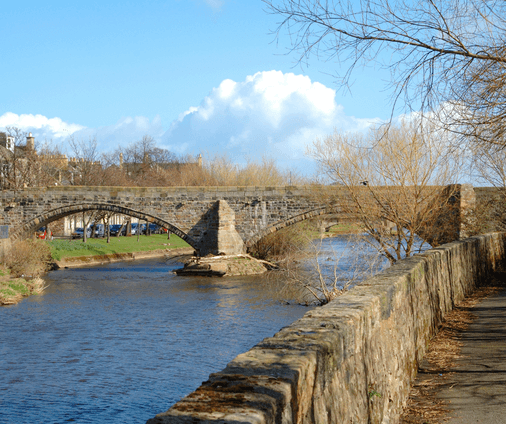
The Levenburgh Links wetland bird reserve and Musselburgh Lagoons are a 5-minute walk from our coastal campsite near Musselburgh and form part of the John Muir Way. There are fabulous views across the Firth of Forth towards Fife from the seawall. It is a great place for bird watching Scotland and dog walking, as well as watching the Edinburgh sunsets. Levenhall Links Bird Reserve is a nature reserve in Scotland created from the infill ash from the now dis-used nearby Cockenzie Power Stations.
Two ash Musselburgh lagoons in the Levenhall Links Nature Reserve have been designated as part of the Firth of Forth Special Protection Area and are an important roosting site for wading birds at high tide, including widgeon, terns, gulls, grebes and sea ducks such as eider, velvet scoter, red-breasted merganser, long-tailed duck and golden eye. There are lagoons, picnic areas and bird hides. Levenhall Links are one of the most popular sites for birdwatching in Edinburgh. Other Edinburgh wildlife which can be seen at Levenhall Links are red fox, roe deer, brown hare, weasel, common toad, common seal, and grey seals in Scotland.
The River Esk rises in the Pentland Hills and flows into the Firth of Forth at Musselburgh. Along the banks of the river are a number of riverside footpaths and cycleways making the River Esk a perfect place to combine some gentle exercise with the chance to spot Edinburgh wildlife. The river trails are dog friendly.
At the mouth of the River Esk, a 10-minute drive or scenic walk of around an hour, you are likely to see grey seals in Scotland, as well as wading birds feeding on the mudflats at low tide, including redshank. Mute swans also gather here in the mid-summer and early autumn to moult. As the River Esk passes through the town of Musselburgh you will note swallows, house martins and swifts hunting for insects above the river.
As you proceed on the riverside footpaths take a look at the flora and the fauna. Wild garlic, garlic mustard and few-flowered leek alongside the River Esk in Spring. Kingfishers nest in the western bank, dippers under the bridges, and herons are a common sight in the pools. If you are lucky you may spot salmon leaping up the ladder at the old weir, water vole or an otter. The River Esk has a large population of freshwater pearl mussels.
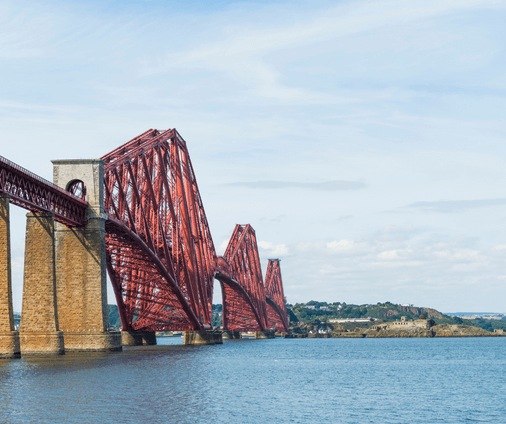
Around 500,000 seabirds make the Firth of Forth islands their home in Summer, including gannets, puffins, kittiwakes, terns, guillemots, razorbills, fulmars, shags and cormorants. These islands are a great place for a wildlife boat trip in Scotland. Boat trips can be arranged from North Berwick (30-minute drive from Drummohr) or South Queensferry (40-minute drive).
A steep sided volcanic rock, in the Firth of Forth, off the coast of North Berwick, 15 miles or so from our coastal campsite at Drummohr, is the largest Northern gannetry in the world, with over 150,000 nesting Northern gannets in this huge gannet colony. Bass Rock is uninhabited and has ruins of an ancient chapel, a castle and the Stevenson designed Bass Rock Lighthouse. There are boat trips by catamaran and by RIB from the Scottish Seabird Centre in North Berwick, including the Bass Rock Experience which allows guests to spend some time on Bass Rock itself. Gannets are on Bass Rock between April and October.
The Isle of May National Nature Reserve is one of the best places to see grey seals in Scotland. Grey seals in Scotland start to build on the Isle of May for the breeding season, with seal pups being born from mid-October. Wildlife boat trips run to the Isle of May between April and September.
On the southern edge of the Forth, puffins mainly nest on the islands of Fidra, an RSPB Scotland reserve, and Craigleith. Puffins are normally resident from mid-April to the end of July.
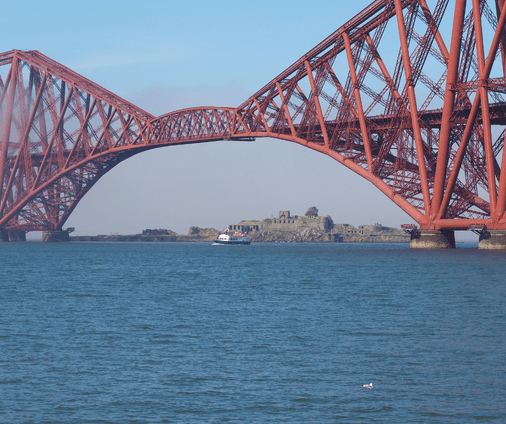
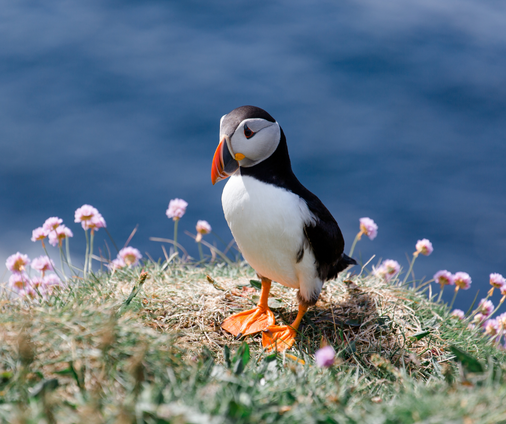
A wildlife boat trip to Inchcolm Island is a great place to spot porpoises in Scotland and grey seals in Scotland where there is a resident seal population on Haystack Rock Seal Colony. Some wildlife boat trips in Scotland allow a short time for landing on Inchcolm Island, including a visit to Inchcolm Abbey which is in the care of Historic Environment Scotland.
Firth of Forth wildlife boat trips in Scotland to the gannet colony on Bass Rock are ran from the Scottish Seabird Centre in North Berwick. This includes the Bass Rock Landing Experience.
There are also departures from South Queensferry on the Maid of Forth or operating from Forth Boat Tours which includes a Three Bridges Sightseeing Cruise under the Forth Rail Bridge, the Forth Road Bridge and the newer Queensferry Crossing. RSPB Scotland Birdwatching Tours are available on the Maid of Forth. High speed RIBs are available from Forth Sea Safaris at Burnitsland.
Guests on these wildlife boat trips in Scotland have also been lucky enough to spot passing dolphins in Scotland and porpoises in Scotland. At certain times of year, the trips are great for whale watching Scotland, with minke whales being spotted near Inchcolm, passing orcas and a flurry of humpback whale and sei whale sightings in recent years. The Forth Marine Mammal Project keeps track of whale watching Scotland sightings from their base in Fife and a number of other locations along the Firth of Forth.
The Scottish Seabird Centre has a number of opportunities in their interactive Discovery Experience for visitors to experience the wildlife of the Firth of Forth without taking a boat trip. Cameras on Bass Rock relay live pictures of Northern gannets from Bass Rock. There is a visitor centre and café. The Scottish Seabird Centre also run Wildlife Boat Trips which are great for birdwatching, whale watching Scotland and seeing porpoises in Scotland. There are also a number of events held at the Scottish Seabird Centre.